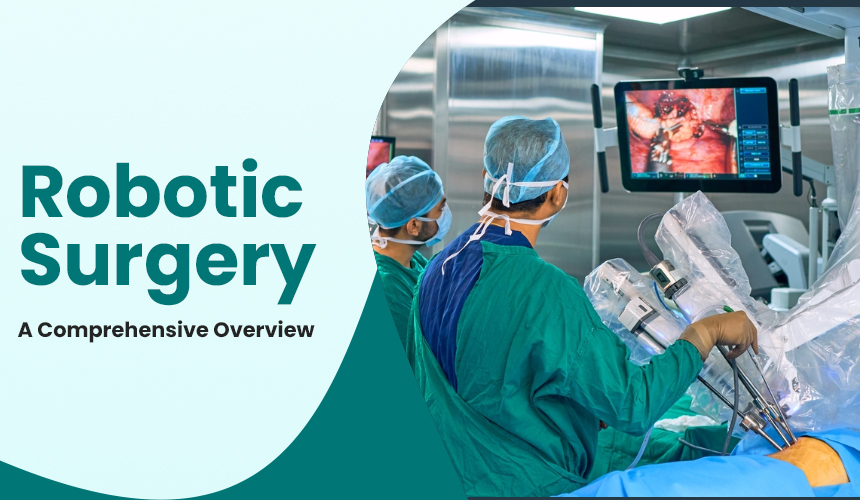Robotic Surgery for Urology Conditions: A Comprehensive Overview
Robotic surgery represents a groundbreaking advancement in the field of medical science, revolutionizing surgical procedures with its precision and patient benefits. This has also benefited patients suffering from urology conditions all over the world. Understanding how robotic surgery works and its components is crucial to appreciating its transformative impact on modern healthcare.
How Robotic Surgery Works
Robotic surgery operates through a sophisticated system consisting of several key components:
1. Surgeon Console: This interface provides surgeons with a high-definition 3D view of the patient's anatomy, offering unparalleled visual clarity. Surgeons manipulate wristed surgical instruments with precision using controls on the console.
2. Vision Cart: Supporting the 3D high-definition camera/vision system, the vision cart facilitates seamless communication among the various components of the robotic surgical system.
3. Patient Cart: Equipped with cameras and instruments, the patient cart holds the tools necessary for surgery. Surgeons control these instruments remotely via the console, enabling precise maneuvers within the body.
Robotic Surgical System- DaVinci surgical system
The Da Vinci surgical system, part of robotic surgical systems, comprises multiple robotic arms equipped with surgical instruments. These arms replicate surgeon hand movements with superior precision and a broader range of motion compared to traditional laparoscopic instruments. Surgeons operate the robotic arms from a surgical console within the operating room, which provides a 3D view of the surgical field and precise hand controls for instrument manipulation. High-definition cameras mounted on the robotic arms offer detailed visualization of the surgical site, enhancing navigation through complex anatomical structures. Employed across various surgical specialties such as urology, gynecology, general surgery, and cardiac surgery, the Da Vinci system's success lies in its ability to enhance surgical precision, minimize invasiveness, and accelerate patient recovery.
Advantages of Robotic Surgery
Enhanced Precision
Robotic surgery's computer-controlled robot offers unparalleled precision and dexterity, allowing surgeons to perform intricate procedures with accuracy. The system's high-definition 3D camera provides magnified visualization, further enhancing precision.
Less Invasive Procedures
Minimally invasive robotic surgery involves fewer incisions, reducing the risk of complications such as bleeding and infections. The robotic arm's ability to maneuver in tight spaces enables complex procedures previously only feasible through larger incisions.
Reduced Blood Loss
By minimizing tissue trauma, robotic surgery significantly reduces blood loss during procedures, eliminating the need for blood transfusions and promoting quicker recovery.
Faster Recovery Time
The minimally invasive nature of robotic surgery accelerates the body's healing process, enabling patients to resume their daily activities within weeks post-surgery.
Minimal Scarring
With smaller incisions and less tissue disruption, robotic surgery results in minimal scarring, enhancing cosmetic outcomes and patient satisfaction.
Increased Patient Safety
Robotic surgery boasts a lower risk of infections and complications, ensuring enhanced safety for patients undergoing procedures.
Improved Outcomes
Patients undergoing robotic surgery experience superior outcomes, including reduced blood loss, smaller scars, and shorter hospital stays. Additionally, they report less pain and discomfort during recovery, facilitating a quicker return to routine activities.
Cost Benefits
Robotic surgery offers substantial cost savings due to shorter hospital stays and faster recovery times, minimizing healthcare expenses for both patients and healthcare providers.
Is Robotic Surgery Right for You?
While robotic surgery presents numerous benefits, it may not be suitable for everyone. Consulting with urology specialists can help determine the most appropriate surgical approach based on individual circumstances. Comparing robotic surgery with other techniques, including minimally invasive and open surgery, ensures informed decision-making regarding treatment options. Robotic surgery stands as a testament to the remarkable advancements in medical technology, offering unparalleled precision, safety, and patient outcomes. By understanding its workings and advantages, patients can make informed decisions about their healthcare, ushering in a new era of surgical excellence and recovery.


